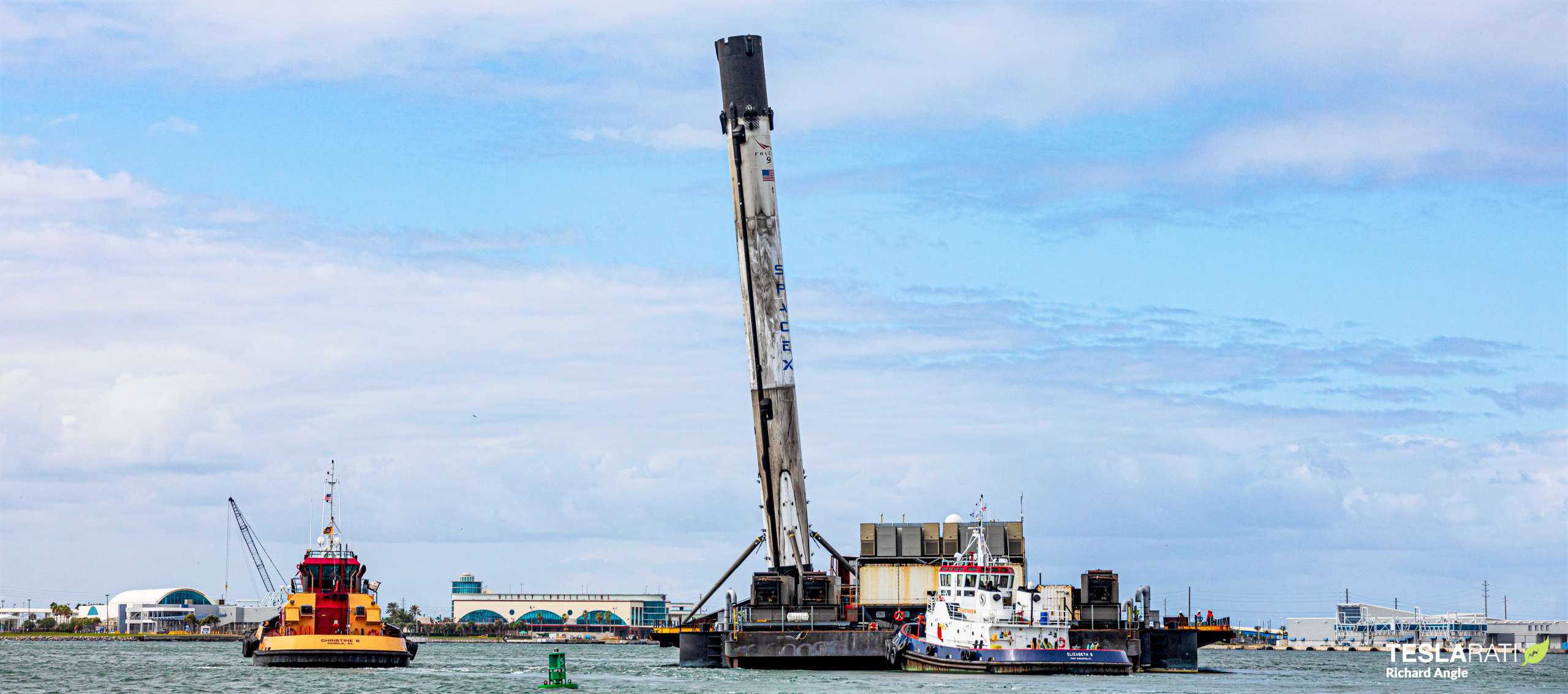On November 19th, what is likely SpaceX’s most important Falcon 9 booster yet returned to Port Canaveral with a surprise – perhaps the most dramatic lean ever observed on one of the recovered rockets.
Tilted a solid 10+ degrees from vertical, the lean was immediately visible as soon as the top of the rocket crest the horizon, and it later became clear that one of Falcon 9 booster B1061’s four landing legs had no contact at all with drone ship Just Read The Instruction’s (JRTI) deck. Four days prior, Falcon 9 (and B1061) became the first commercially-developed rocket in history to be certified to launch NASA astronauts, a feat it pulled off flawlessly. Crew Dragon safely delivered four astronauts to the International Space Station on November 16th, marking the culmination of more than half a decade of (mostly) uninterrupted work.
Even before Crew Dragon and Falcon 9’s momentous Crew-1 launch, though, NASA had already revealed some details that would make parts of Crew-1 even more important and the follow-up Crew-2 launch – scheduled as early as March 2021 – perhaps the most significant mission in SpaceX’s history.
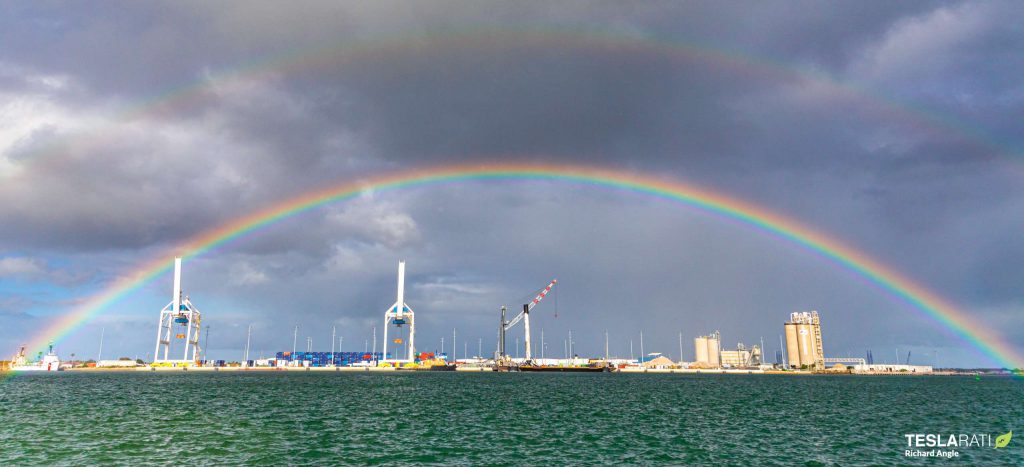
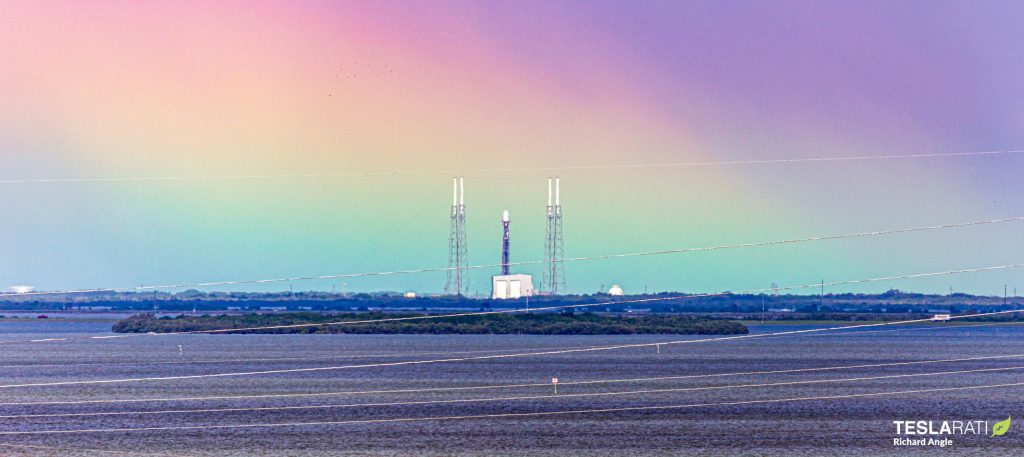
In short, less than a month after SpaceX’s equally flawless Crew Dragon Demo-2 astronaut launch debut, NASA contract modifications revealed that the agency had permitted SpaceX to reuse both Dragon capsules and Falcon 9 boosters on upcoming astronaut launches.
“In a wholly unexpected turn of events, a modification to SpaceX’s ~$3.1 billion NASA Commercial Crew Program (CCP) contract was spotted on June 3rd. Without leaving much room for interpretation, the contract tweak states that SpaceX is now “[allowed to reuse] the Falcon 9 launch vehicle and Crew Dragon spacecraft beginning with” its second operational astronaut launch, known as Post Certification Mission-2 (PCM-2) or Crew-2.”
Teslarati.com — June 9th, 2020
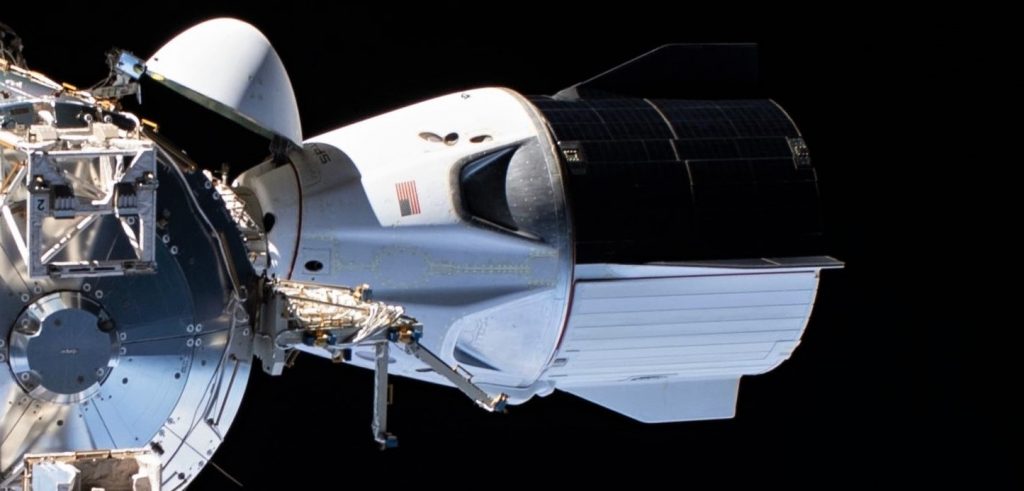
A few short months after that discovery, NASA itself specifically announced that it had given SpaceX the go-ahead to reuse Demo-2 Crew Dragon capsule C206 and Crew-1 Falcon 9 booster B1061 on Crew-2, the company’s second operational astronaut launch. Scheduled no earlier than March 31st, 2021, Crew-2 will most likely launch before the Crew-1 Crew Dragon departs the space station and returns its four crew members to Earth, a milestone expected sometime in April.
For almost anyone who has followed NASA’s Commercial Crew Program (CCP) and its attitude towards SpaceX’s reusability efforts from the beginning, the space agency’s rapid willingness to trust its most important cargo – humans – to flight-proven Dragons and Falcon 9 boosters came as a huge surprise. If SpaceX is able to reuse both capsule C206 and booster B1061 as planned, Crew-2 will without a doubt be the most significant milestone in commercial spaceflight history, simultaneously proving that astronauts can be safely launched on commercial flight-proven rockets and spacecraft.
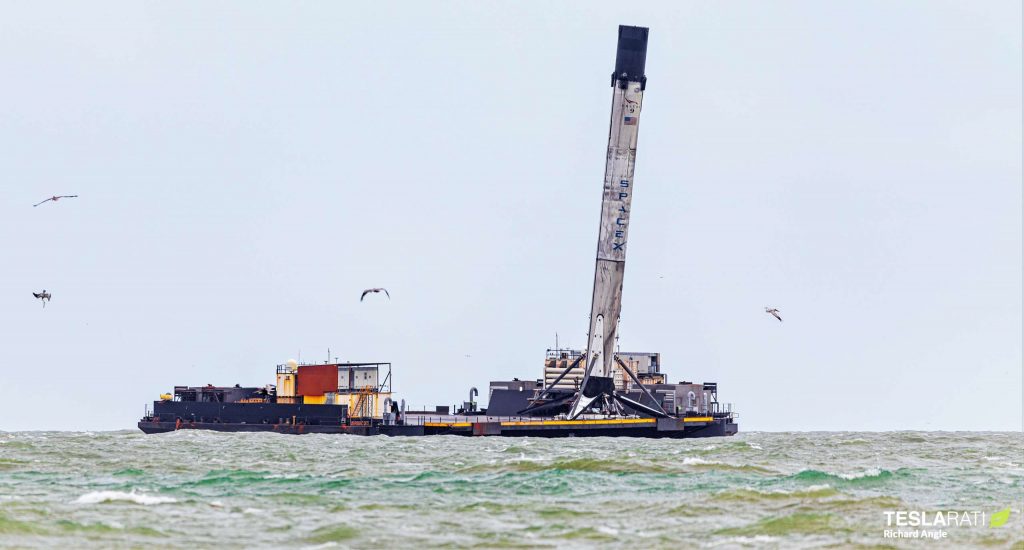
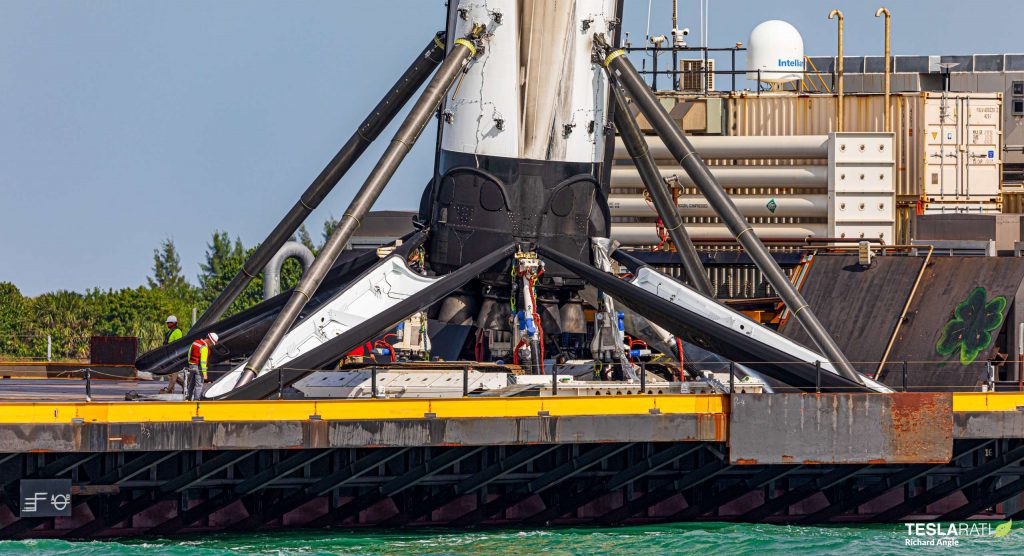
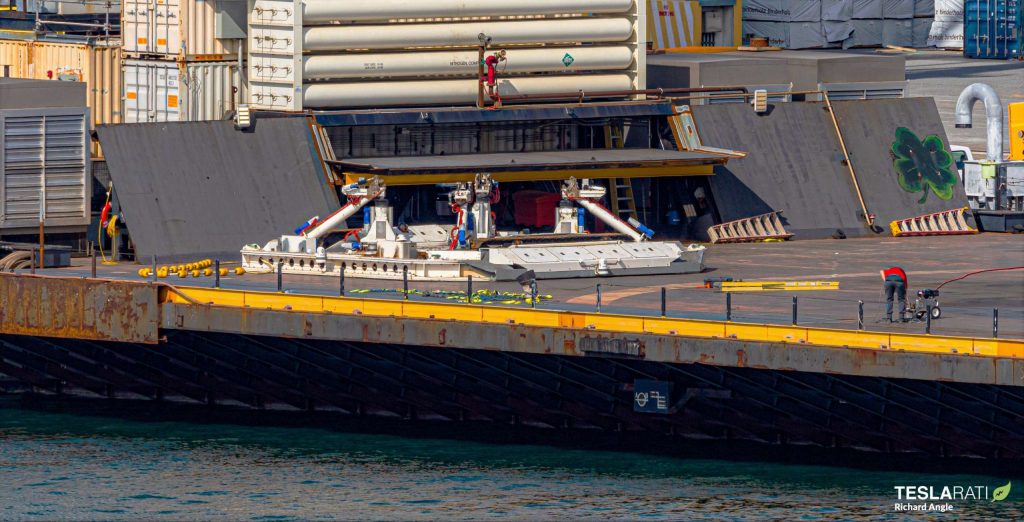
Of course, while Demo-2 Crew Dragon capsule C206 may have already been successfully recovered, SpaceX still had to land Falcon 9 booster B1061 and safely return it to port after Crew-1 before it could consider reusing it on Crew-2. Based on the rocket’s appearance upon its arrival at Port Canaveral, B1061 had an extremely close call. With what can be intuited from observation alone, it appears that sometime after B1061 landed and before the drone ship’s tank-like ‘Octagrabber’ robot could secure the booster, a stray swell or sudden burst of high seas must have bucked Just Read The Instructions about, causing B1061 to slide around on the slippery deck.
That would explain why the Falcon 9 first stage arrived in port on one of the far corners of drone ship JRTI – also sign that B1061 likely hit the yellow barrier included specifically to prevent boosters from sliding off drone ship decks. At the same time, B1061 must have had a moderately rough landing, causing at least one of its four legs to expend a large portion of a single-use shock absorber called a “crush core,” leaving the booster sitting at an angle. Based on photos of the arrival, that tilt likely left JRTI’s Octagrabber unable to latch onto all four of Falcon 9’s hold-down clamps, forcing recovery technicians to improvise and manually chain the rocket to the deck where the robotic solution fell short.
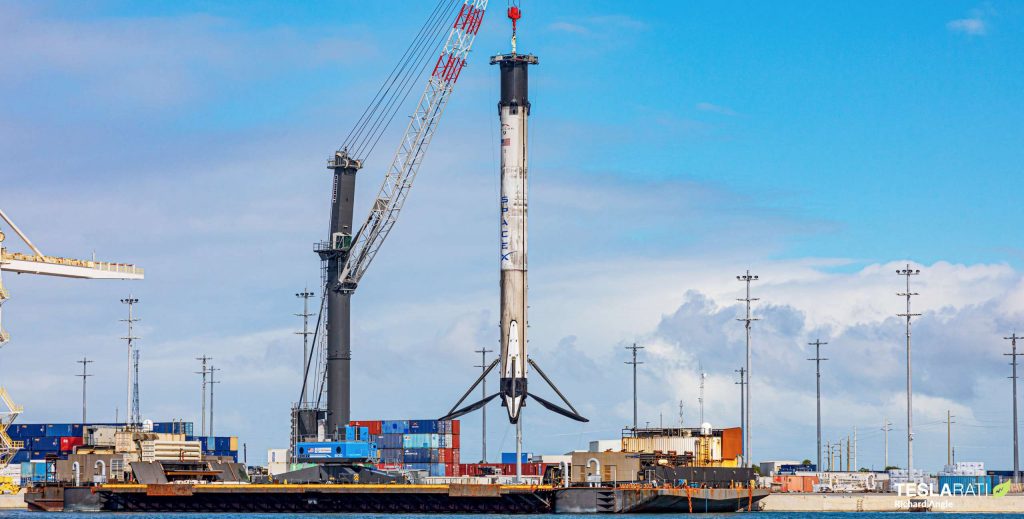
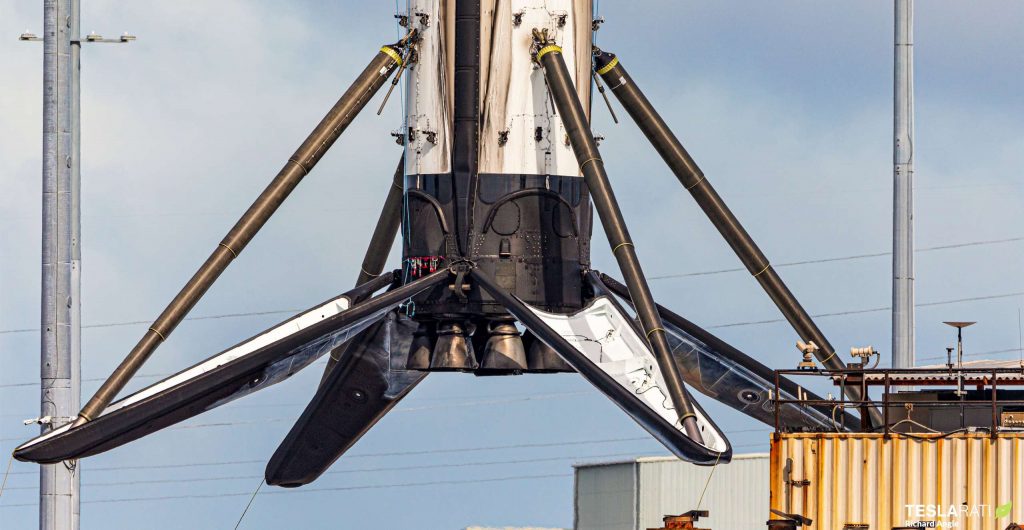
Thankfully, the SpaceX recovery team’s apparent heroics and luck proved to be enough and the sturdy Falcon 9 booster was returned to dry land without issue, lifted off of JRTI’s deck around 24 hours after arriving in port. Based on photos of the crush cores at the bottom tip of each leg, B1061’s rough landing and eventful journey was fairly mild as far as they come and, as CEO Elon Musk notes, crush core replacement is likely all that’s needed to make the rocket good as new.
Had B1061 been lost at sea, Crew-2 would have almost certainly been delayed to give SpaceX enough time to come up with an entirely new Falcon 9 first stage. Luckily for SpaceX, that didn’t happen and the company’s plans to launch astronauts on the flight-proven booster are still in play.

